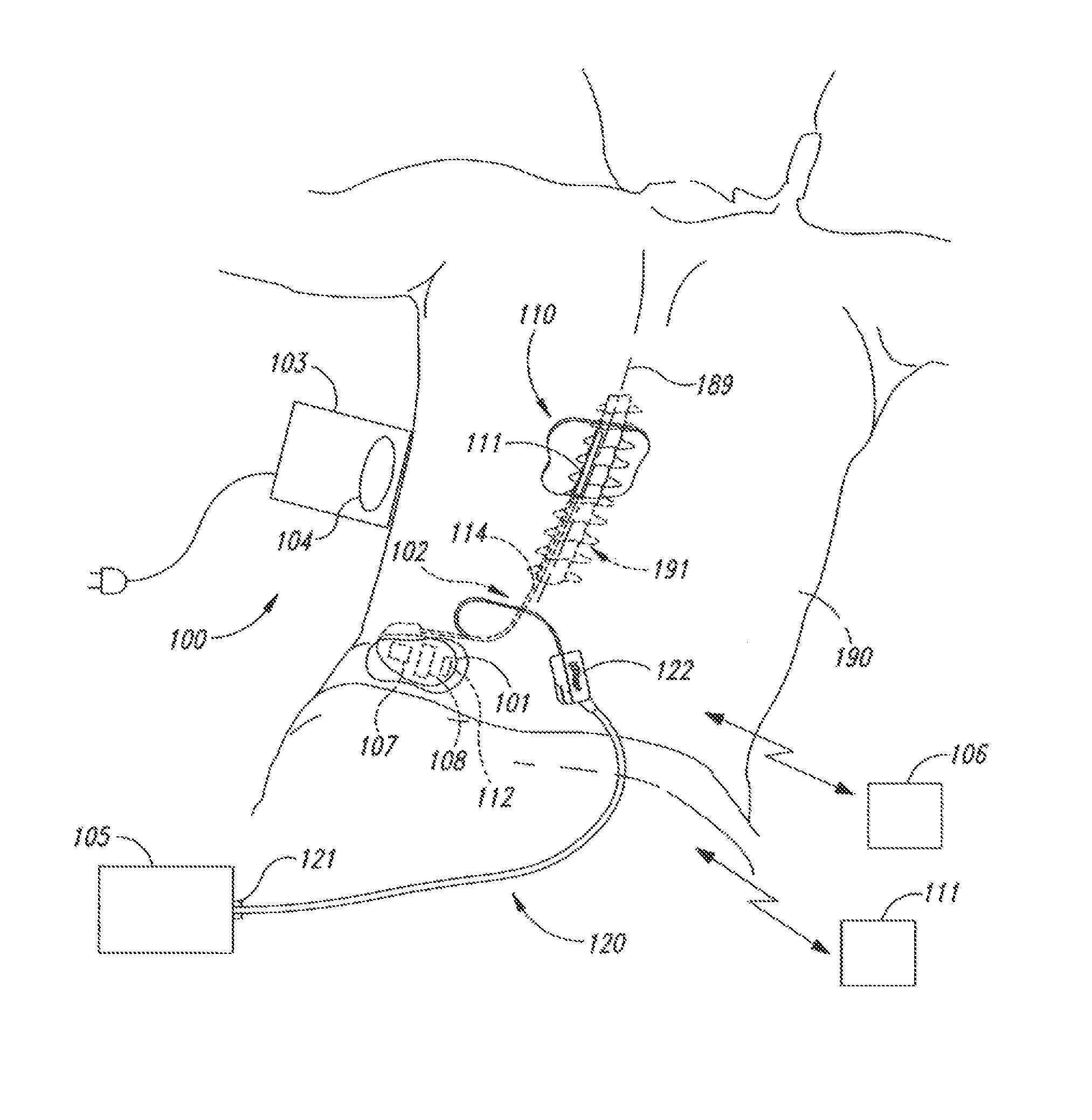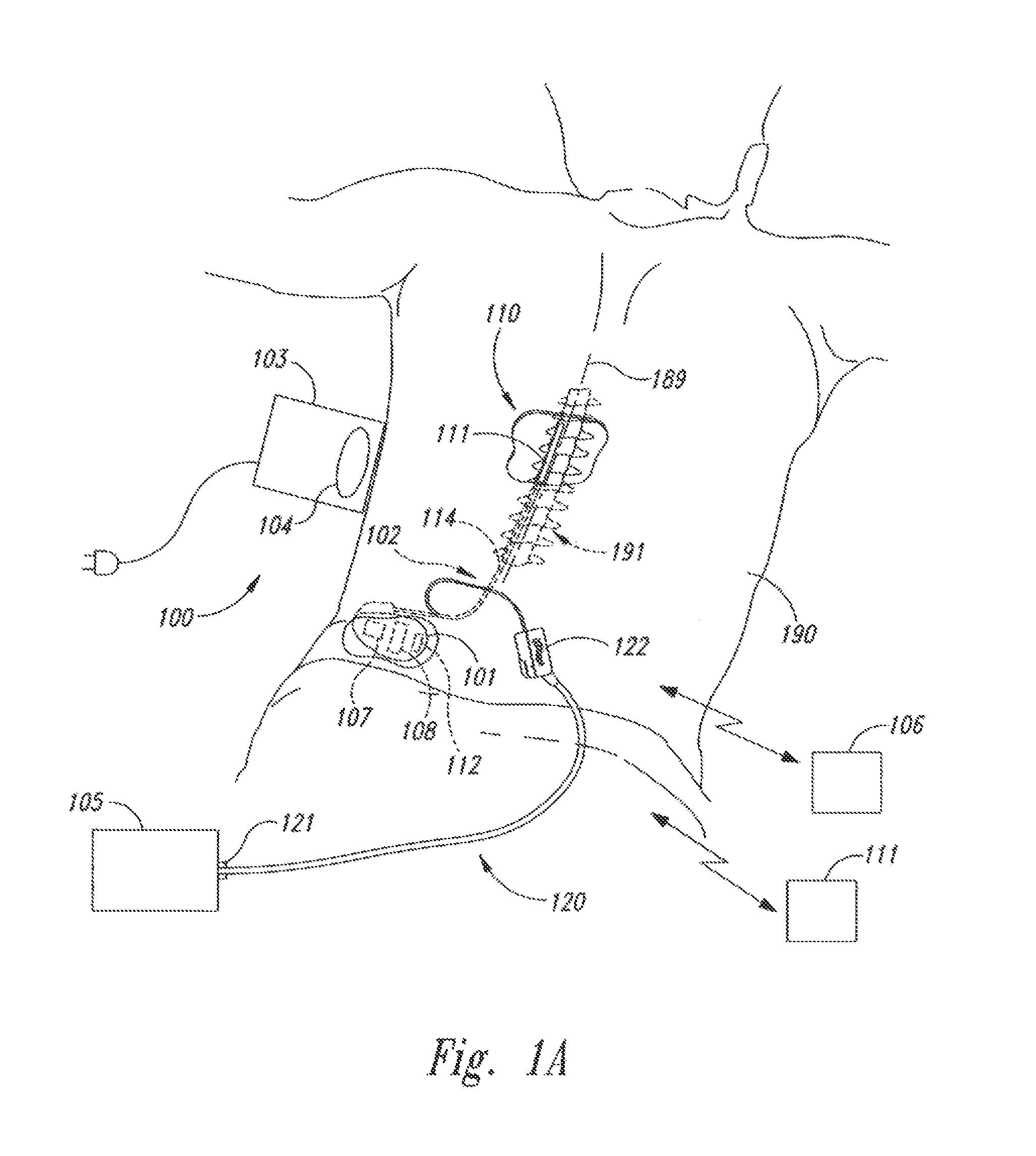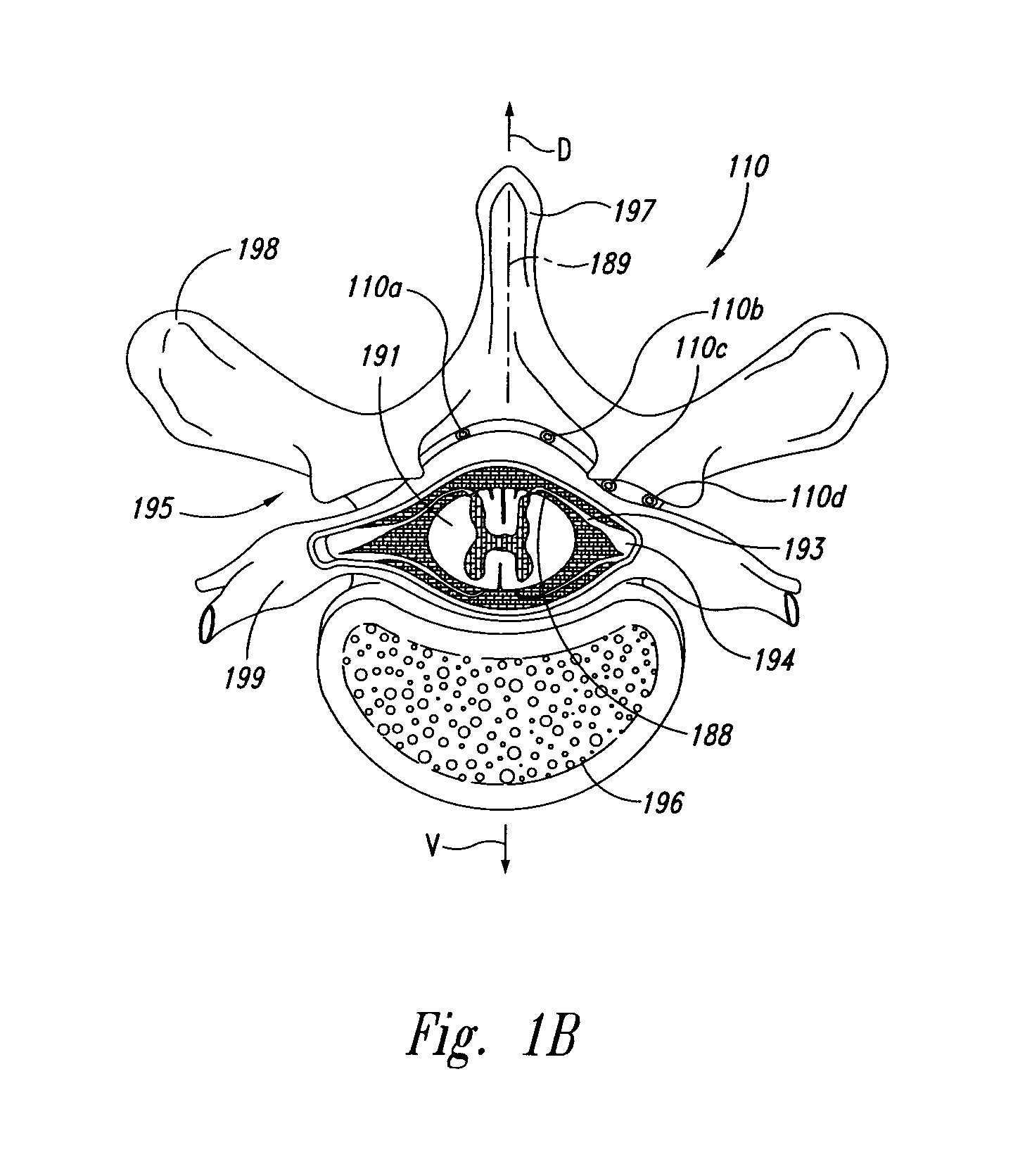Selective high frequency spinal cord modulation for inhibiting pain with reduced side effects, and associated systems and methods
a high-frequency spinal cord and side effect technology, applied in the field of selective high-frequency spinal cord modulation for inhibiting pain with reduced side effects, can solve the problem that many other patients may report less beneficial effects
- Summary
- Abstract
- Description
- Claims
- Application Information
AI Technical Summary
Benefits of technology
Problems solved by technology
Method used
Image
Examples
Embodiment Construction
1.0 Introduction
[0020]The present technology is directed generally to spinal cord modulation and associated systems and methods for inhibiting pain via waveforms with high frequency elements or components (e.g., portions having high fundamental frequencies), generally with reduced or eliminated side effects. Such side effects can include unwanted motor stimulation or blocking, and / or interference with sensory functions other than the targeted pain. Several embodiments also provide simplified spinal cord modulation systems and components, and simplified procedures for the practitioner and / or the patient. Specific details of certain embodiments of the disclosure are described below with reference to methods for modulating one or more target neural populations (e.g., nerves) or sites of a patient, and associated implantable structures for providing the modulation. Although selected embodiments are described below with reference to modulating the dorsal column, dorsal horn, dorsal root,...
PUM
 Login to View More
Login to View More Abstract
Description
Claims
Application Information
 Login to View More
Login to View More - R&D
- Intellectual Property
- Life Sciences
- Materials
- Tech Scout
- Unparalleled Data Quality
- Higher Quality Content
- 60% Fewer Hallucinations
Browse by: Latest US Patents, China's latest patents, Technical Efficacy Thesaurus, Application Domain, Technology Topic, Popular Technical Reports.
© 2025 PatSnap. All rights reserved.Legal|Privacy policy|Modern Slavery Act Transparency Statement|Sitemap|About US| Contact US: help@patsnap.com



